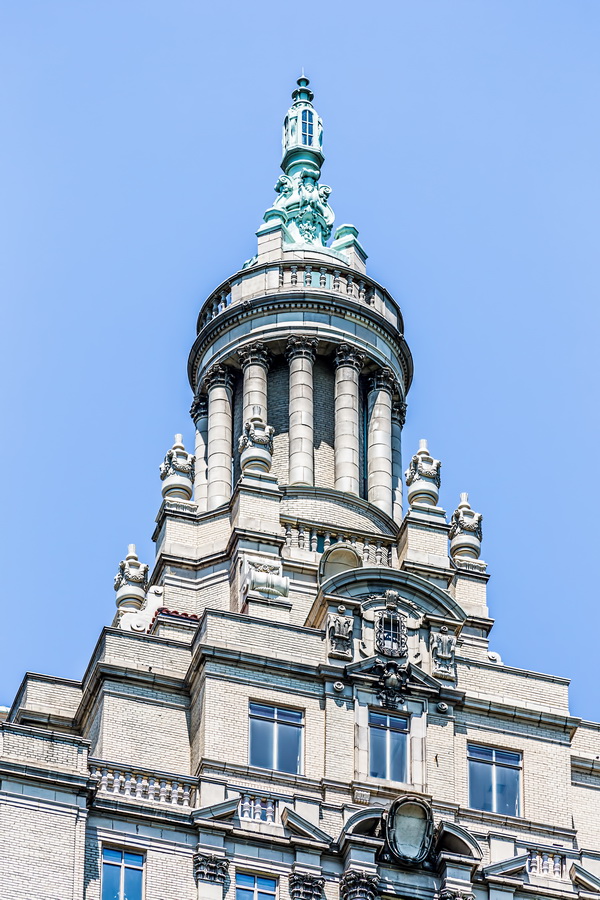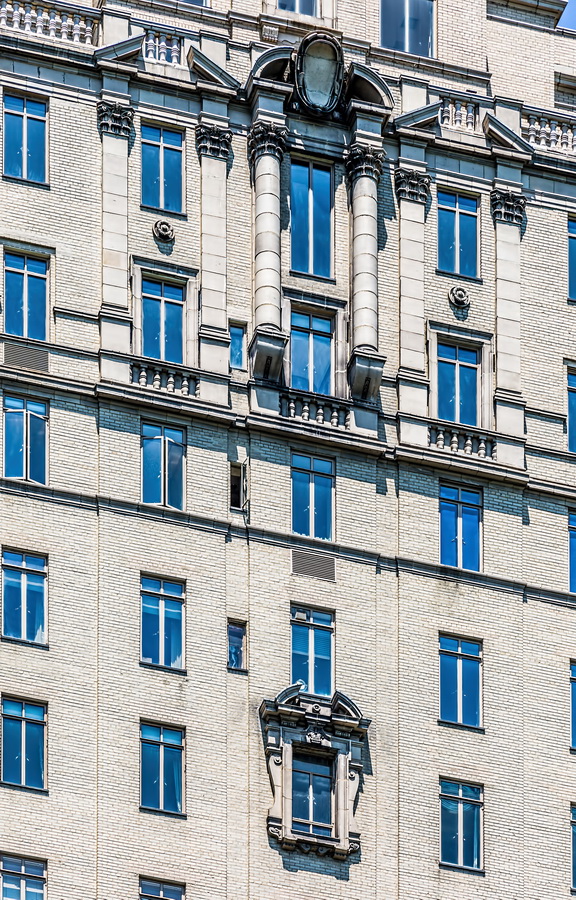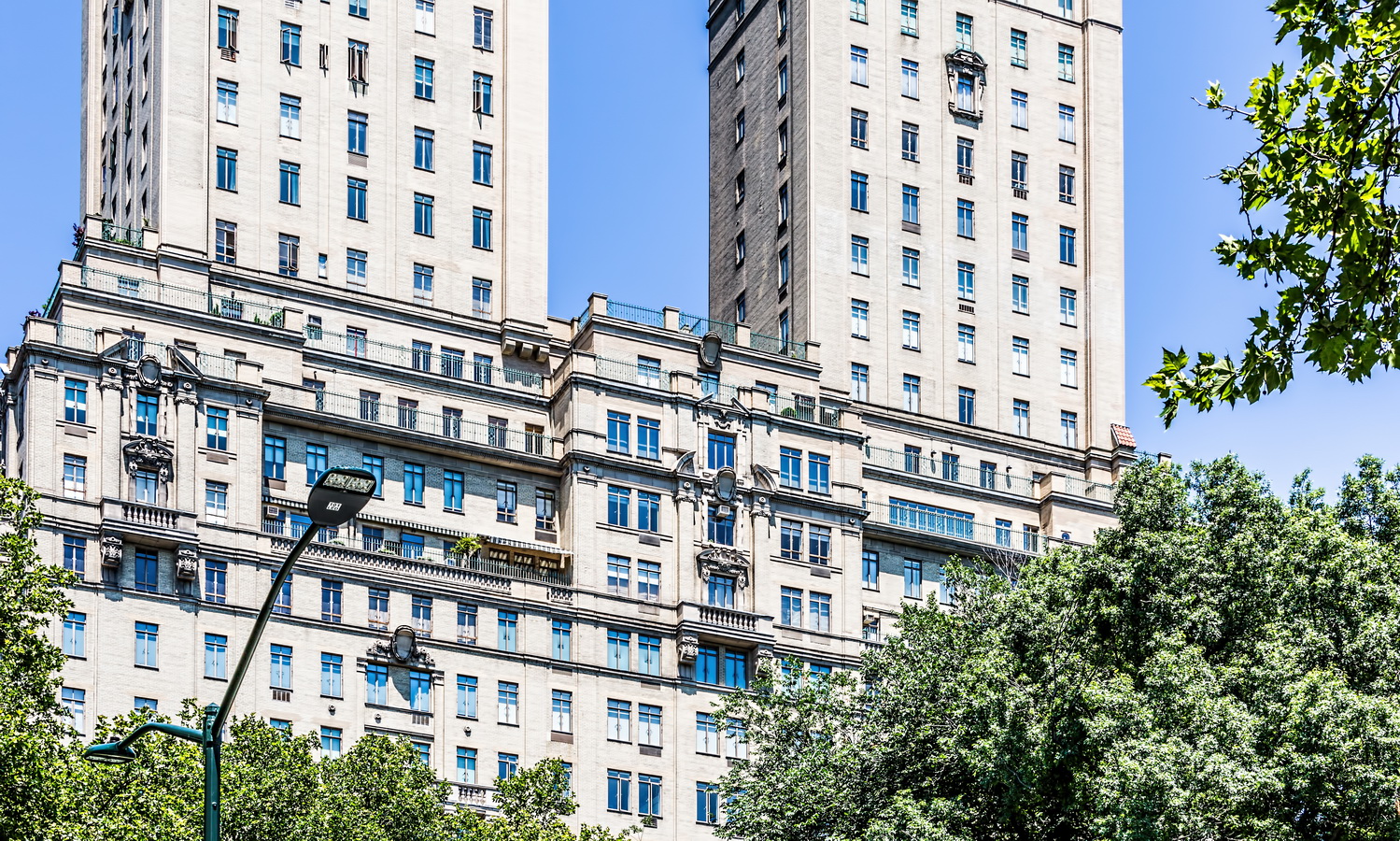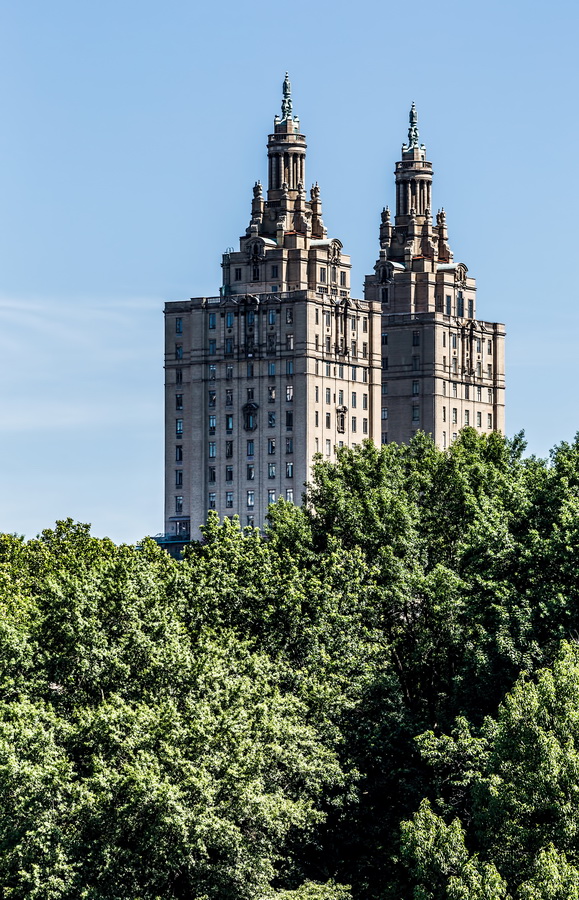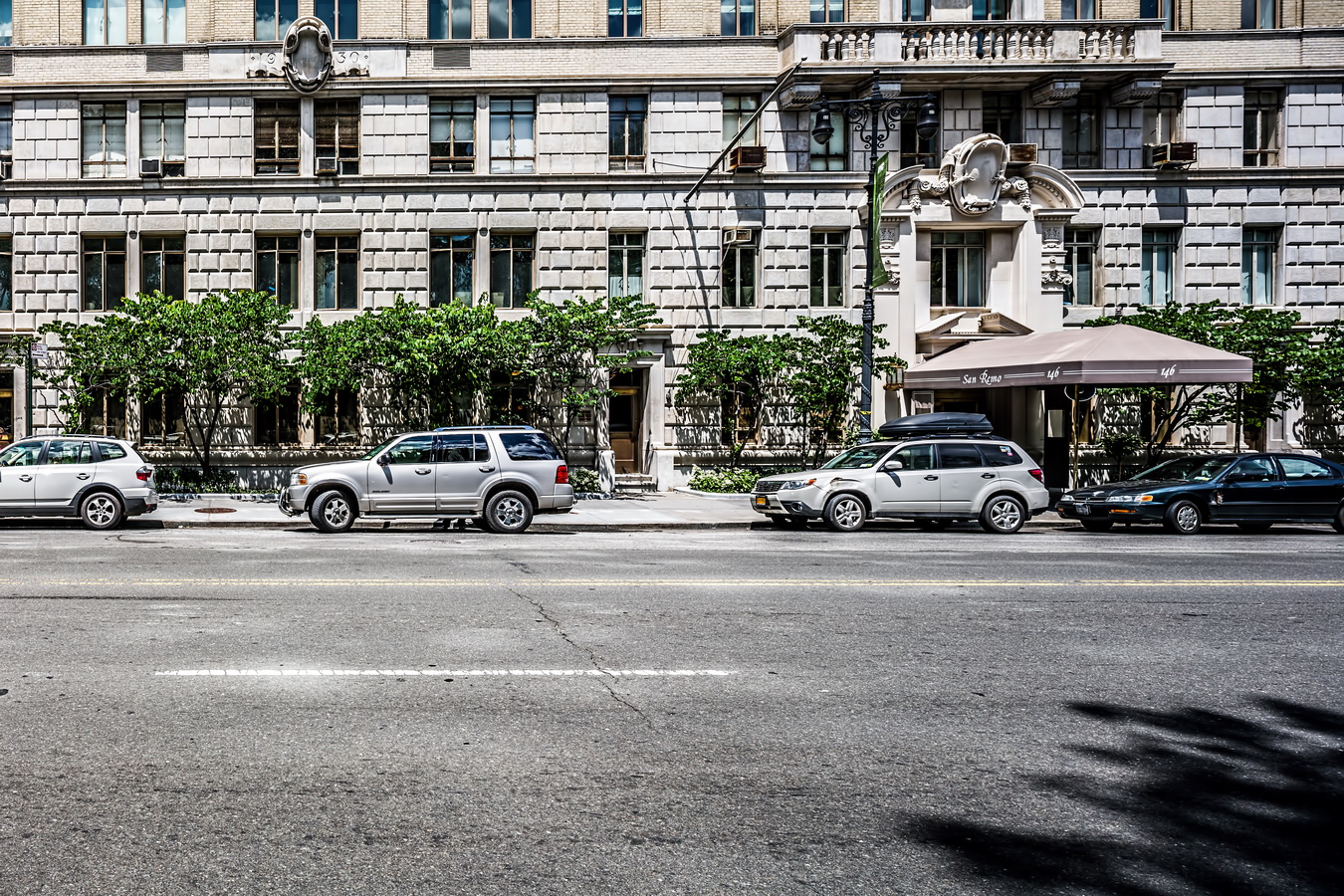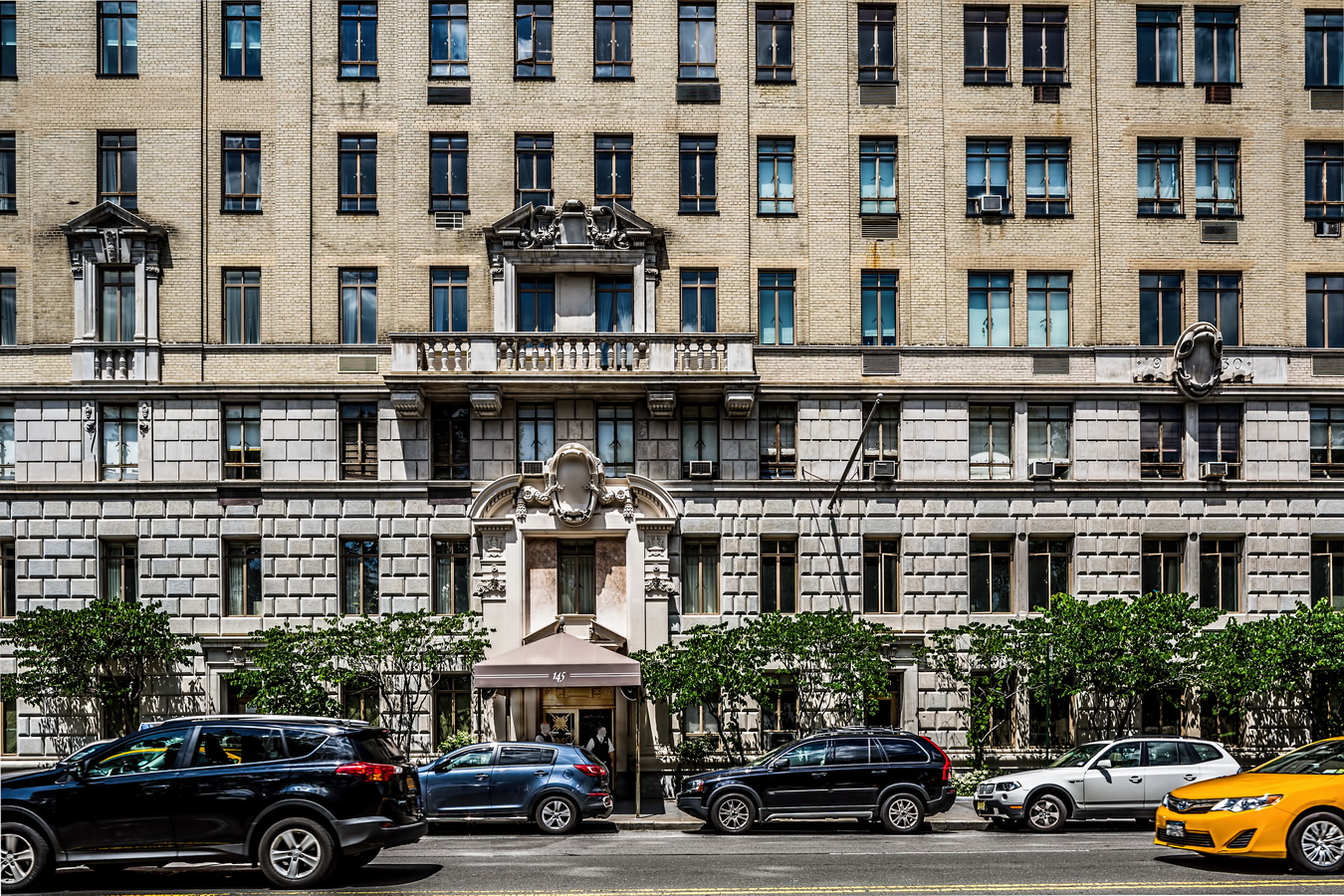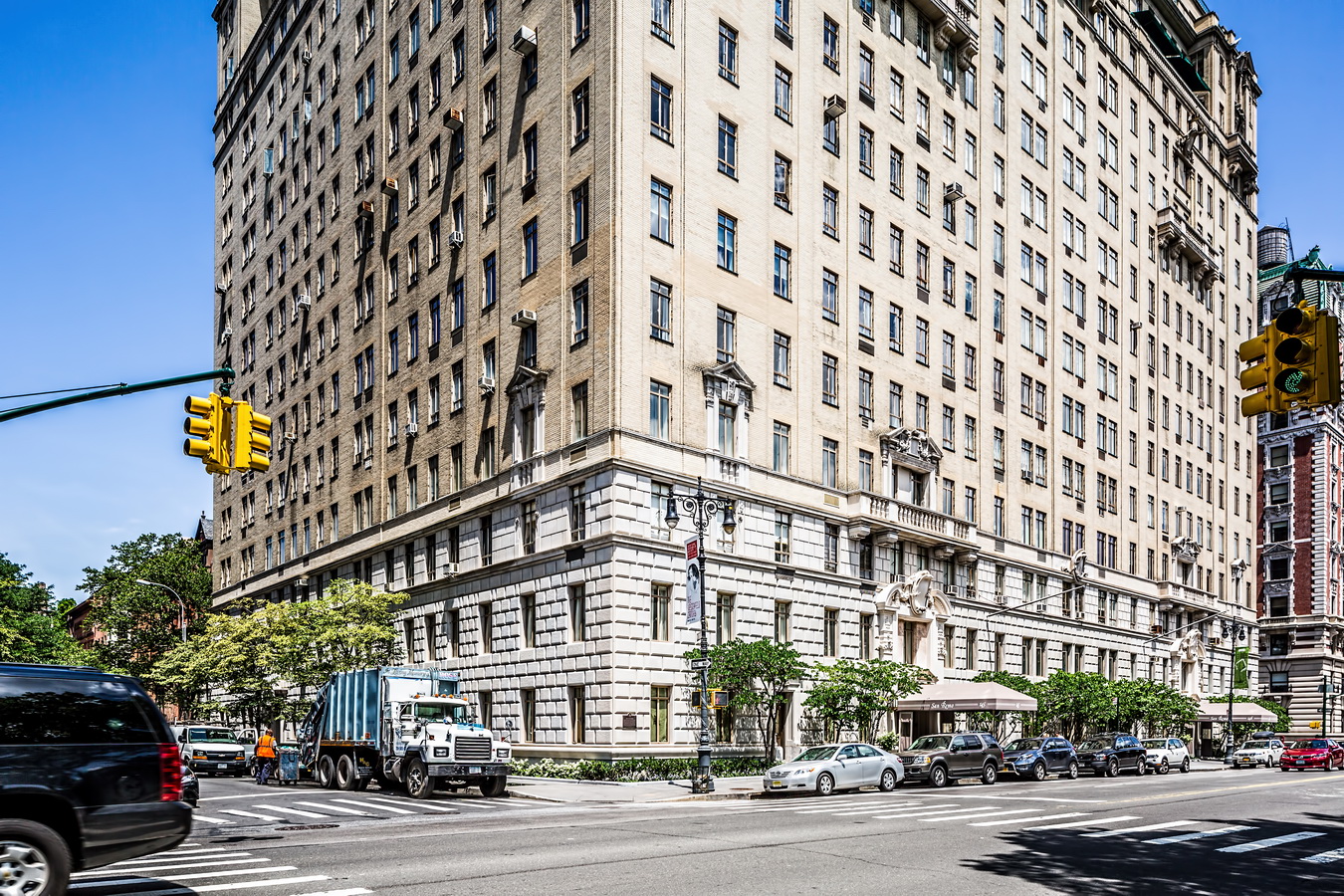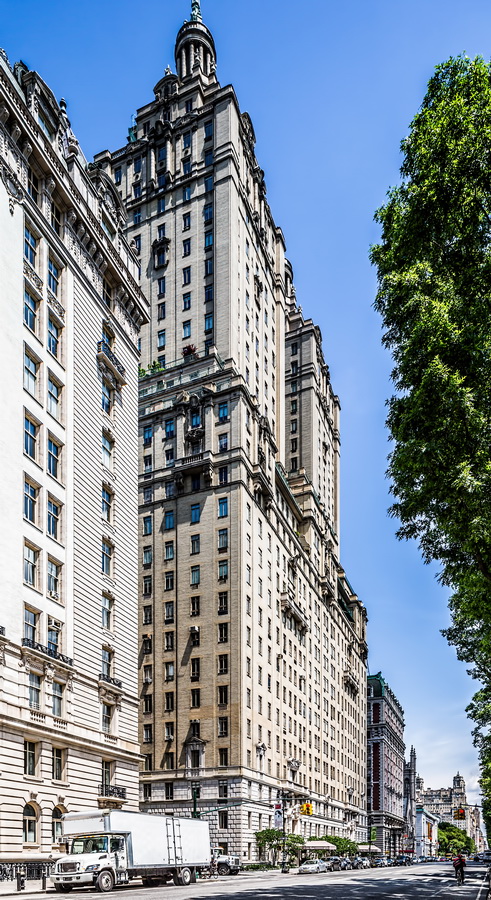San Remo is one of the high points – literally and figuratively – of the Central Park West skyline, and of the career of architect Emery Roth. The NYC Landmarks Preservation Commission (LPC) gushed that the building “…epitomizes Roth’s ability to combine the traditional with the modern, an urbane amalgam of luxury and convenience, decorum and drama.”
Following closely after his triple-towered Beresford (1928), San Remo became the first twin-towered apartment building on the avenue. But where the 22-story Beresford’s stubby “towers” were mainly to hide water tanks, 27-story San Remo’s towers had 14 floors of deluxe apartments. This was possible because a new (1929) building code raised the height limit for residential buildings.
Roth also designed the Oliver Cromwell (1928) on W 72nd Street, was a consultant on the twin-towered El Dorado (1931), and designed the Normandy Apartments (1938) on Riverside Drive.
The San Remo was praised by architectural critics for its height, for the classical Greek-styled “temples” atop the towers, and for the “foyer plan” that minimized hallways.
“Despite its popular success,” said the LPC, the property “…fell prey to the pervasive economic mayhem of the 1930s. A full year after it had officially opened, nearly a third of its apartments remained vacant, and the Bank of the United States which held its $5 million mortgage had collapsed, its officers charged with recklessly ‘gambling’ on the San Remo.”
The building bounced from one owner to another via bankruptcy until 1940, when San Remo and Beresford were sold in a package for $25,000 over the mortgage. Now, individual apartments cost tens of millions of dollars.
San Remo Vital Statistics
- Location: 145 Central Park West between W 74th and W 75th Streets
- Year completed: 1930
- Architect: Emery Roth
- Floors: 27
- Style: Classical
- New York City Landmark: 1987 (individual); 1990 (Upper West Side/Central Park West Historic District)
- National Register of Historic Places: 1982
San Remo Recommended Reading
- Wikipedia entry
- NYC Landmarks Preservation Commission designation report
- The New York Times Streetscapes/The San Remo; 400-Foot-High Twin Towers of Central Park West (December 19, 1999)
- The New York Times Streetscapes/The Beresford, the San Remo, the Majestic, the El Dorado, the Century; Namesake Precursors of Central Park West’s Towers (September 14, 1997)
- City Realty review
- Street Easy NY listing (includes floor plans)
- Emporis database
- Historic Manhattan Apartment Houses


